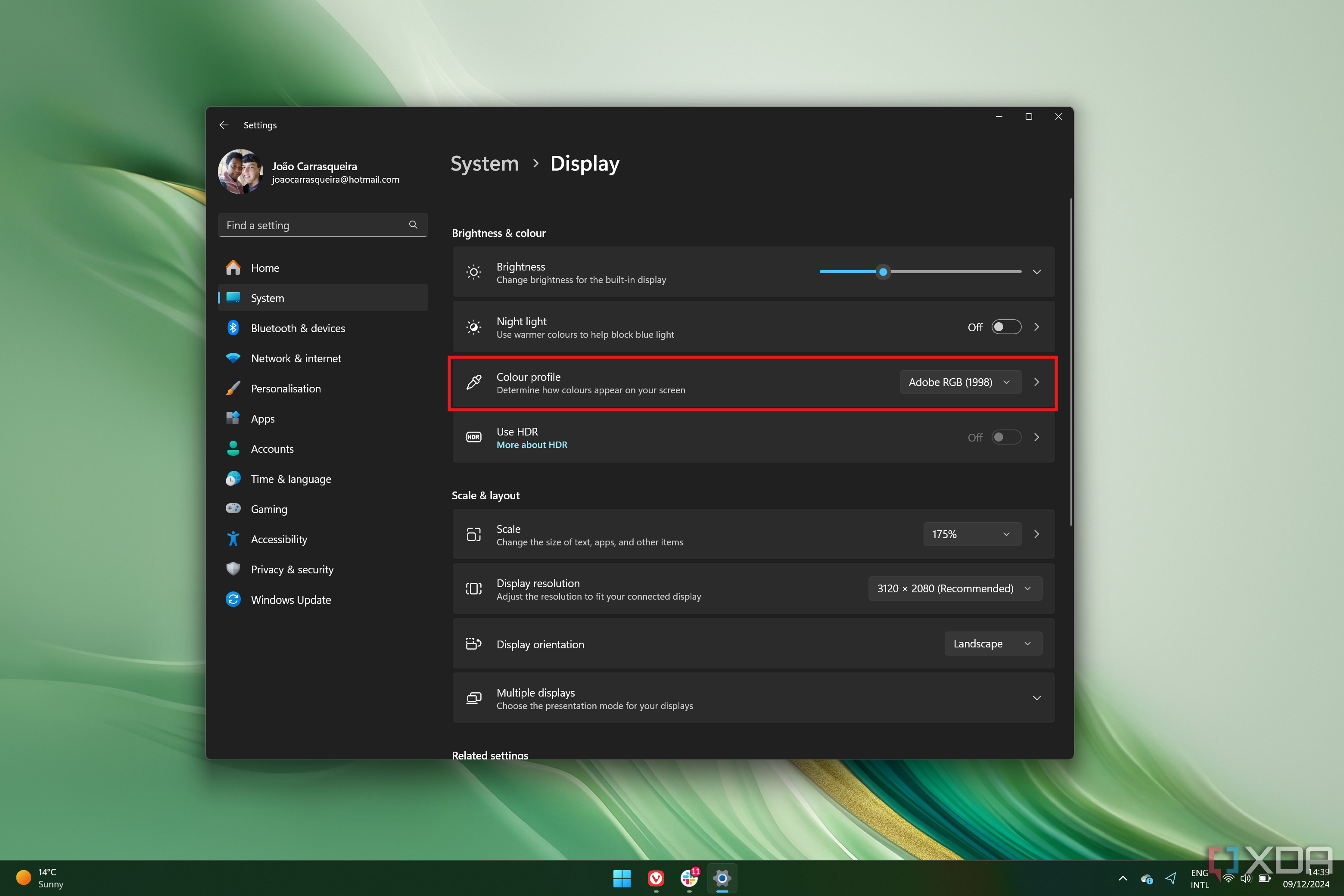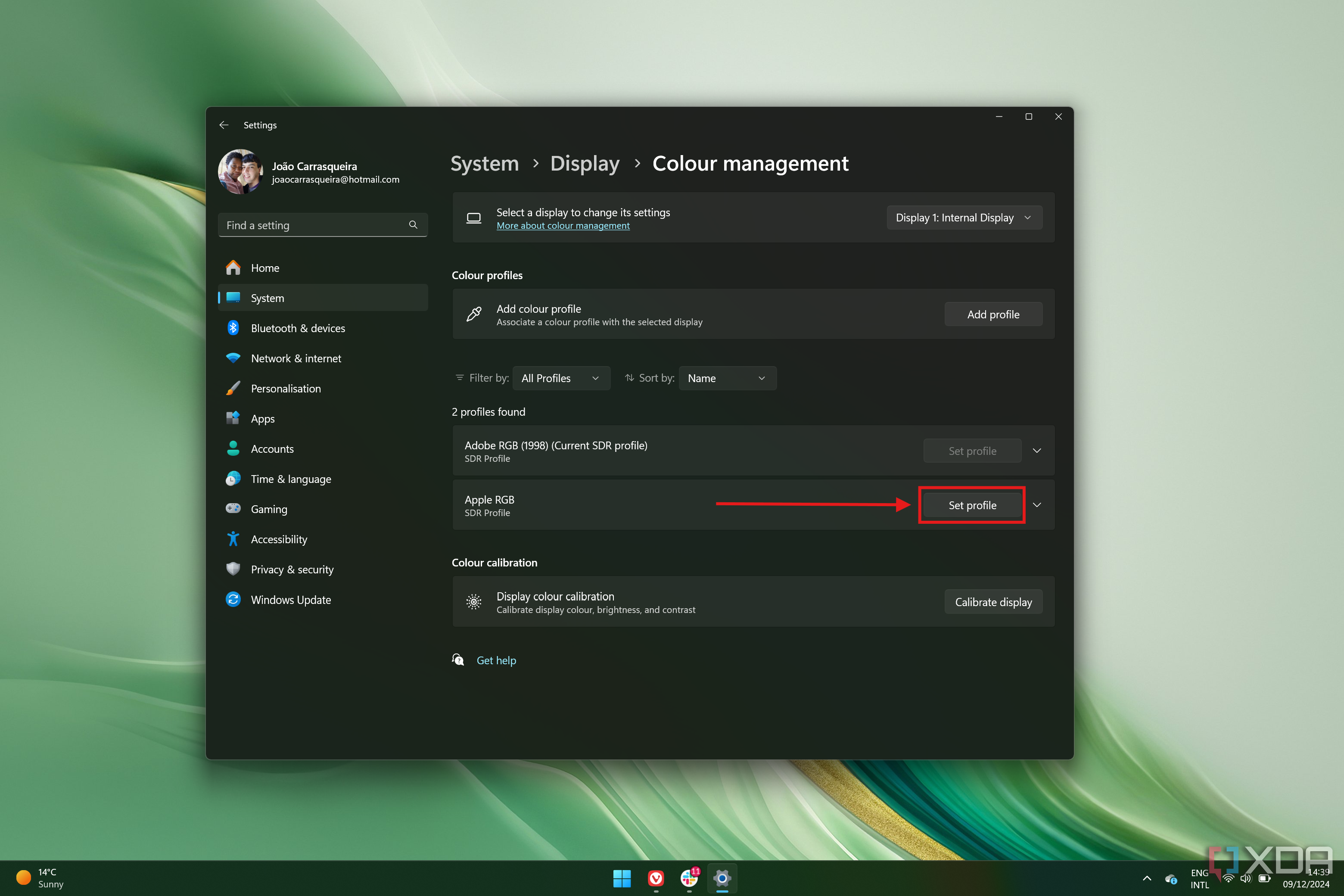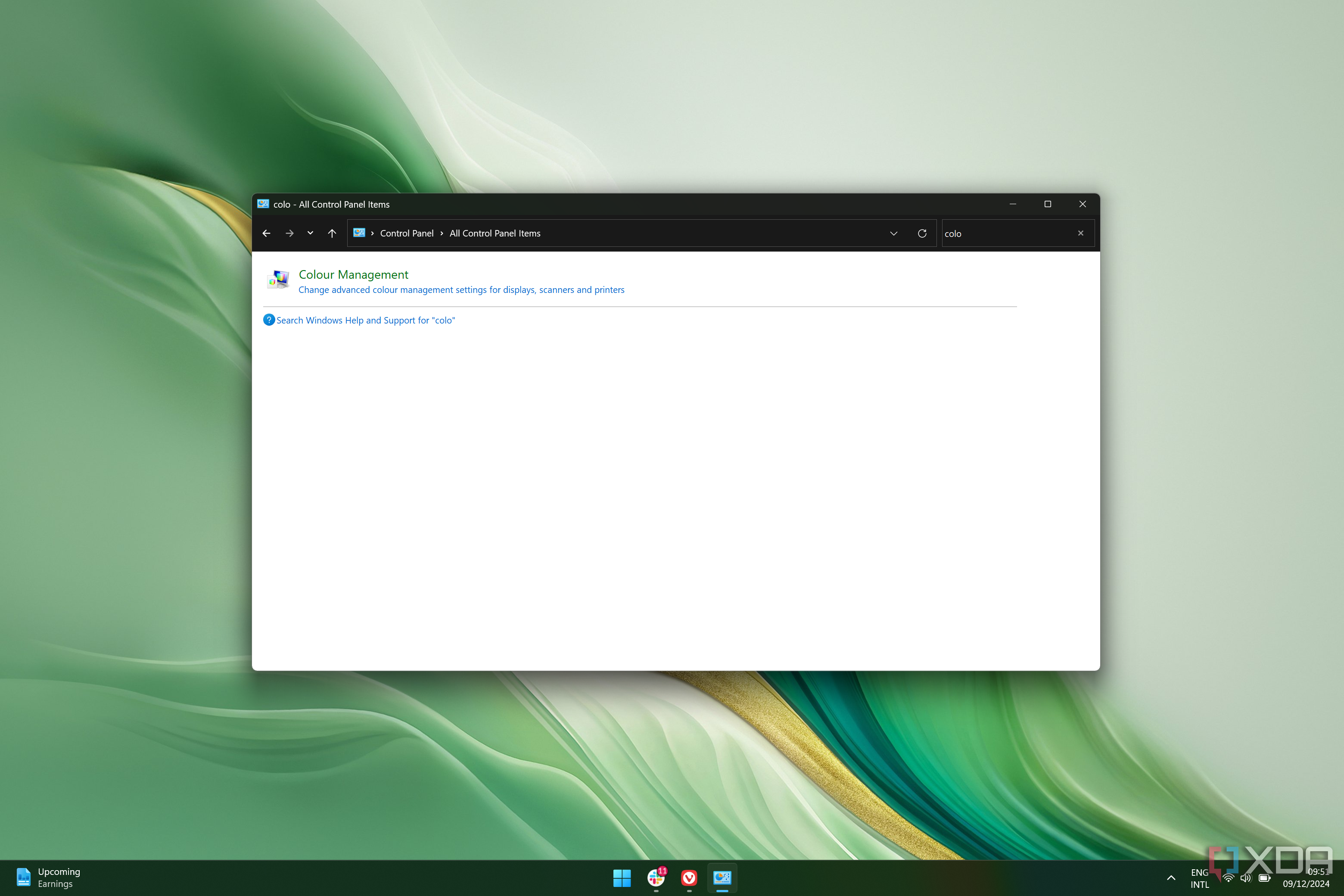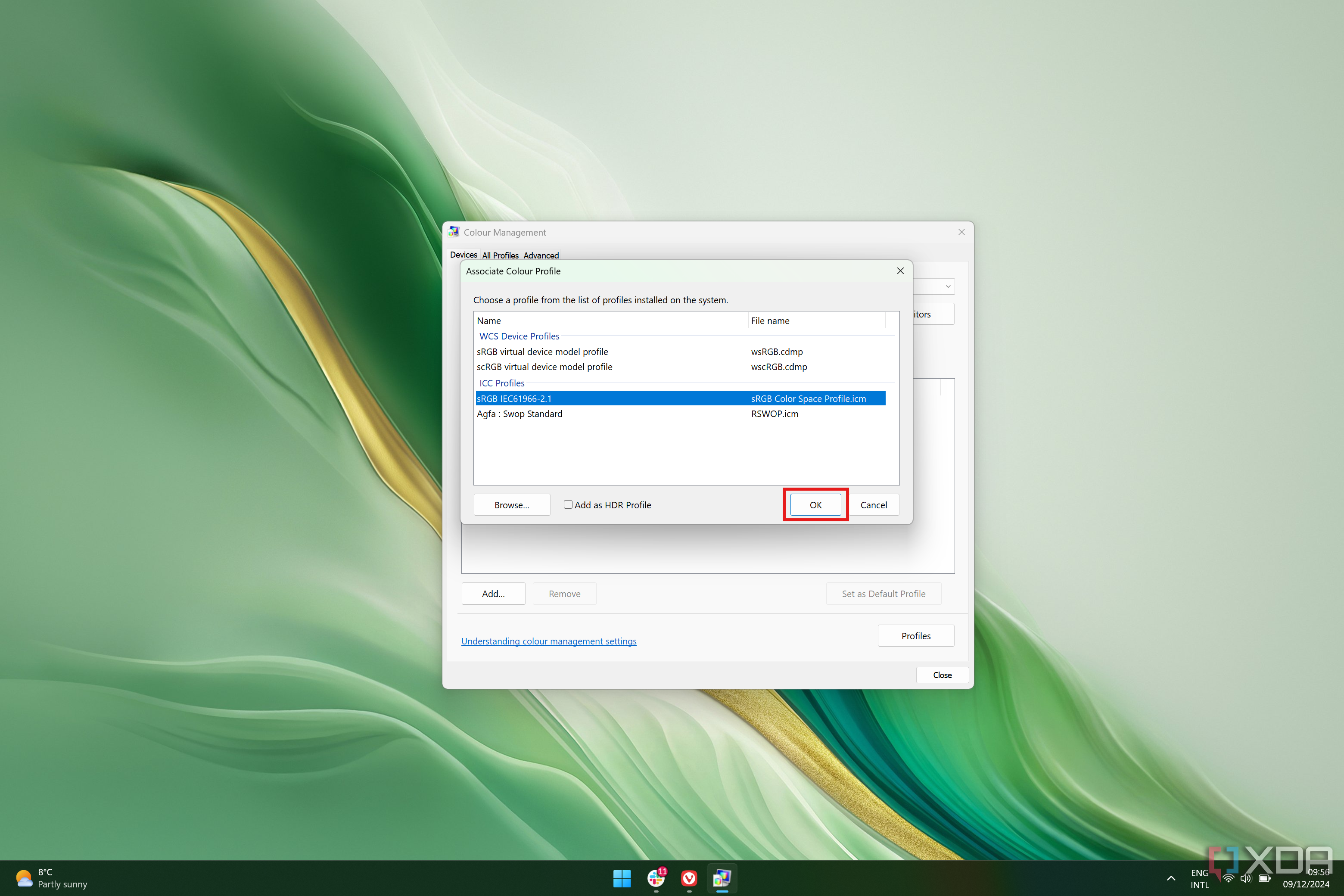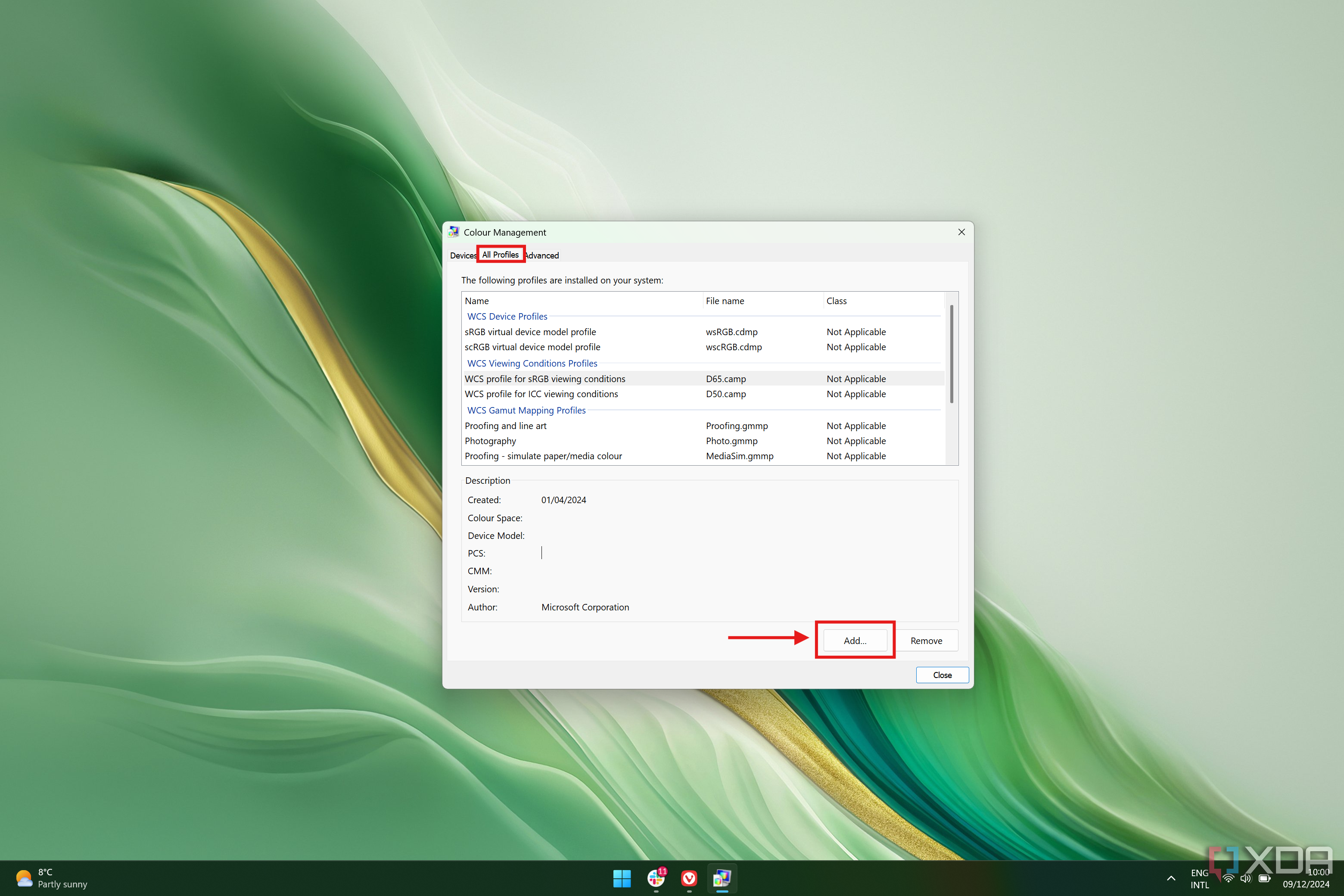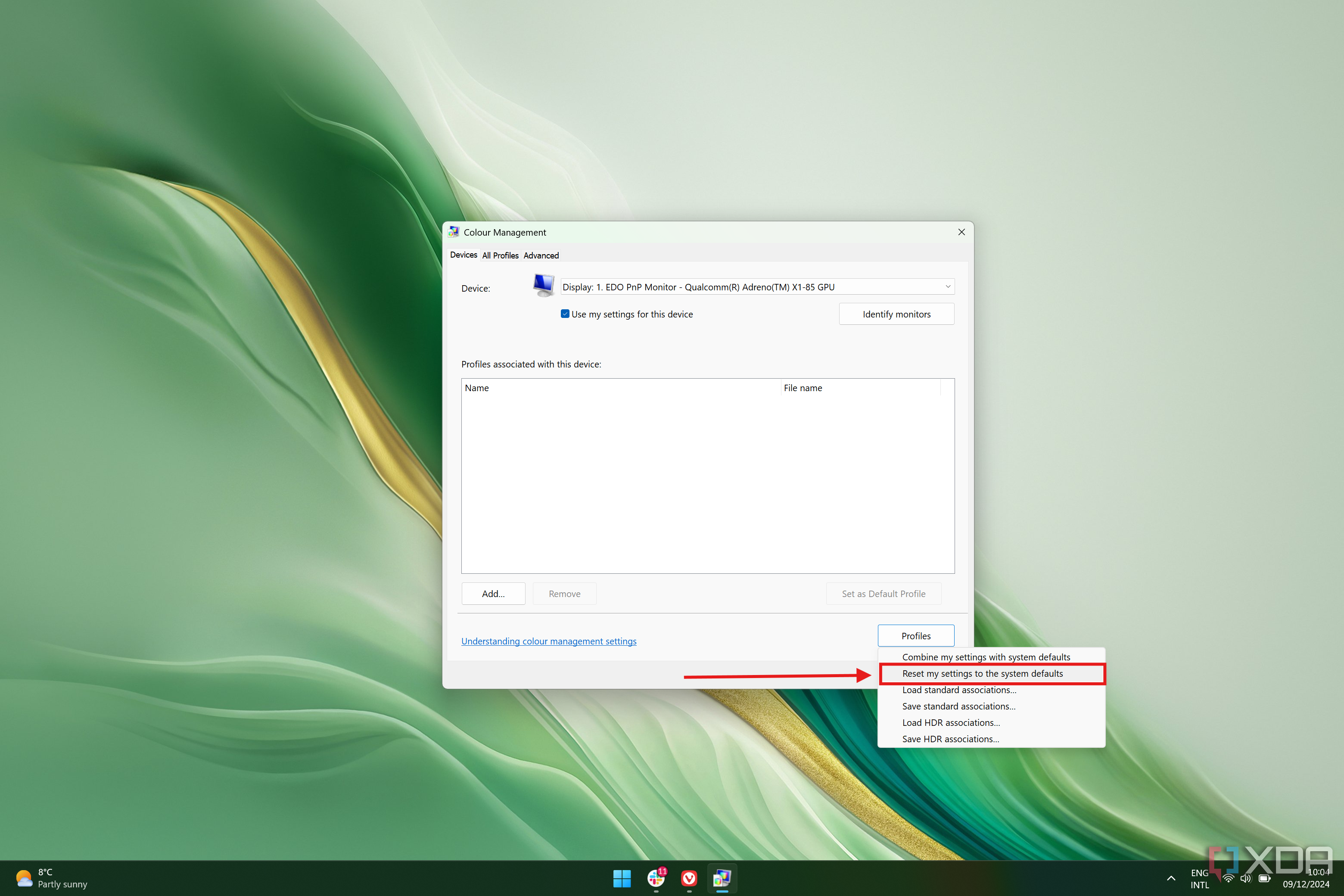Большинство пользователей не сталкиваются с необходимостью ручной установки цветовых профилей монитора в Windows 11/10 и используют стандартные: обычно это не несёт каких-то проблем, а изображение выглядит именно так, как предполагалось производителем мониторов.
Однако, для некоторых мониторов, особенно предполагающих работу с графикой, производители обычно поставляют подходящий цветовой профиль, который разумным будет установить и использовать в Windows после приобретения монитора или переустановки системы. О том, как это сделать и пойдет речь далее в инструкции.
Процесс установки или изменения цветового профиля
Цветовой профиль представляет собой файл .icm или .icc и обычно доступен в комплекте ПО монитора или на официальной странице поддержки конкретной модели монитора отдельно или в составе драйвера. При этом:
- Он может устанавливаться автоматически при установке драйвера монитора — здесь вопросов обычно не возникает, всё происходит автоматически. Несмотря на то, что почти все мониторы исправно работают без установки драйвера вручную, для некоторых моделей, функции и характеристики которых отличаются от стандартных, имеет смысл установить драйвер производителя.
- Может требовать ручной установки.
Далее будет рассмотрен пример именно ручной установки профиля монитора ICM (Image Color Management) или ICC (International Color Consortium).
Необходимые шаги будут следующими:
- Нажмите правой кнопкой мыши по файлу цветового профиля и выберите пункт «Установить профиль в контекстном меню». Каких-либо сообщений вы не увидите, но профиль будет добавлен в системе.
- Нажмите клавиши Win+R на клавиатуре, либо нажмите правой кнопкой мыши по кнопке «Пуск» и выберите пункт «Выполнить», введите colorcpl в окне «Выполнить» и нажмите Ok или Enter.
- В поле «Устройство» выберите нужный монитор, установите отметку «Использовать мои параметры для этого устройства, нажмите кнопку «Добавить» и выберите недавно установленный профиль в списке, нажмите «Ок». Для добавления профиля в список также можно нажать кнопку «Обзор» и выбрать файл профиля, если вы пропустили 1-й шаг.
- Убедитесь, что нужный профиль выбран и нажмите кнопку «Сделать профилем по умолчанию».
После выполнения указанных шагов (иногда только после перезагрузки) монитор должен слегка изменить цвета и начать их отображать так, как было спроектировано и настроено производителем.
Дополнительная информация
Некоторые дополнительные сведения, которые могут быть полезными в части установки цветовых профилей:
- Если вам требуется регулярно менять цветовой профиль монитора, вы можете сделать это в параметрах дисплея Windows: в списке будут отображаться профили, добавленные на 3-м шаге, между которыми вы легко сможете переключаться.
- При включенном режиме HDR, при использовании переходников для подключения монитора, выбор цветового профиля может быть недоступен, либо они могут работать не так, как ожидается.
- В некоторых случаях системные настройки Windows работают не лучшим образом в части цветовых профилей: например, некоторые сталкиваются с невозможностью смены цветового профиля в сценарии, когда к компьютеру подключены два монитора, а в параметрах дисплея установлен показ только на 2-м мониторе.
- Иногда эффективнее обратиться к ПО производителя монитора или к простым утилитам, таким как Colorprofile Keeper.
- Цветовой профиль может автоматически переключаться при запуске 3D приложений, полноэкранных игр и в других сценариях.
- Для Windows 11 Майкрософт предлагает отдельное приложение (доступно в Microsoft Store) — Windows HDR Calibration, позволяющее откалибровать работу дисплея при включенном режиме HDR.
- Некоторые программы для работы с графикой могут иметь собственные настройки отображения цветов. Например, в Adobe Photoshop и Illustrator их можно обнаружить в разделе меню «View» (Вид), пункты Proof Setup и Proof Colors.
Надеюсь, представленная информация поможет разобраться, если вы столкнулись с необходимостью установить или изменить цветовой профиль для вашего монитора. Если же остаются вопросы, вы можете задать их в комментариях.
By default, Windows will automatically assign color profiles based on your display adapter. However, the problem comes when you have multiple monitors and want to use different color profiles on different monitors. This will help you to have a uniform visual experience regardless of your monitor type. If you notice colors are not matching on your primary and secondary display devices, then here is how to install and assign custom color profiles to devices. Remember, color profiles are also applicable for printers and you can follow the same process as explained below.
Getting New Color Profile File
For installing a new color profile, you need the source file generally in .icc or .icm format. Though there are many websites offer these color profile files, it is recommended to get the file for your device from the manufacturer’s website. Some manufacturers offer a packaged file which you may need to extract and get the color profile file. Follow the below steps once you have the color profile file for your device.
Open Color Management in Windows 11
- Type “color management” in Windows Search box to find and open Color Management tool.
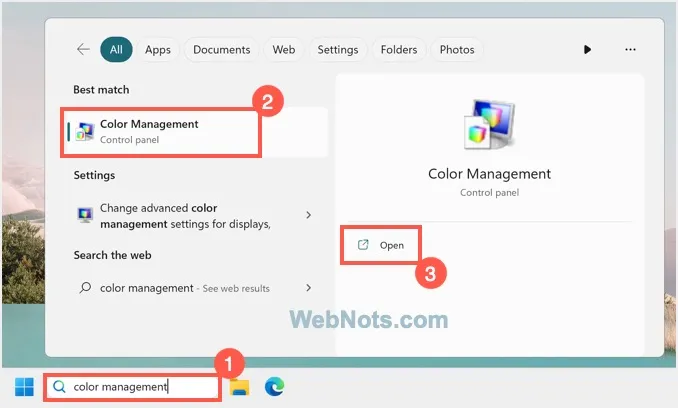
You can also launch Color Management of your display adapter following the below steps:
- Press “Win + I” keys to open Settings app and navigate to “System > Display” section.

- Scroll down to “Related settings” section and click “Advanced settings” option.

- Select the adapter from the list and click “Display adapter properties for Display 1” under “Display information” section. You may see your adapter name instead of Display 1.
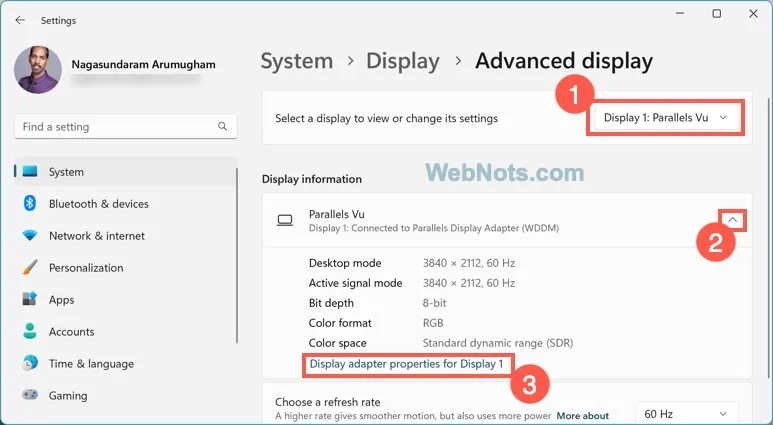
- This will open Color Management properties of your adapter, go to “Color Management” tab and click “Color Management” button.

Installing New Color Profile in Windows 11
When the Color Management dialog box opens, go to “All Profiles” tab. Here you can view all installed color profiles for your display, printer and other relevant devices. Click the “Add” button and select your .icc or .icm color profile file.
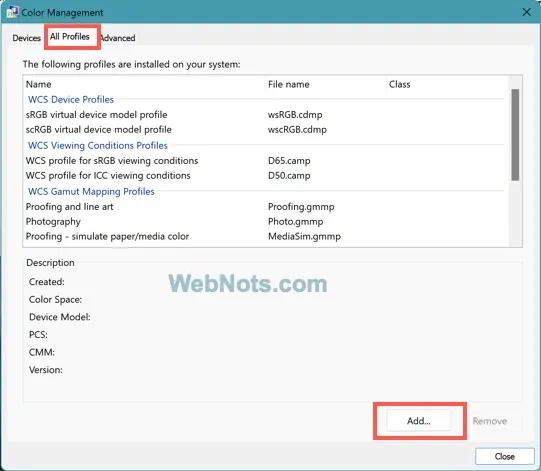
Once installed, the new profile will be shown in the list. If you want to delete a profile, select it and click “Remove” button.
Assigning Color Profile to Device
Next step is to assign the installed color profile to a device.
- For that, go to “Devices” tab and select your display device from the list. As mentioned, you can select your monitor, printer or any other installed device that needs a color profile.

- After selecting a device, check “Use my settings for this device” option to edit the settings. If you are adding color profile for your printer, then select “Manual” option from “Profile selection” dropdown. This option will not be shown for display devices like monitors.

- Click “Add…” button to view a list of installed profiles on your system. Select the newly installed profile from the list and click on “OK” button.

- You will see the color profile is added in the list and click on “Set as Default Profile” button for making it as your default profile for the device.

You can any time remove the assigned profile from the device by clicking on “Remove…” button.
Reset Color Profiles to System Defaults
If you face any problems after assigning color profile to your device, then it is easy to reset profiles to system defaults. For that, click on “Profiles” button under “Devices” tab and select “Reset my settings to the system default” option. This will restore original Windows profiles and you should be able to view the colors like before.
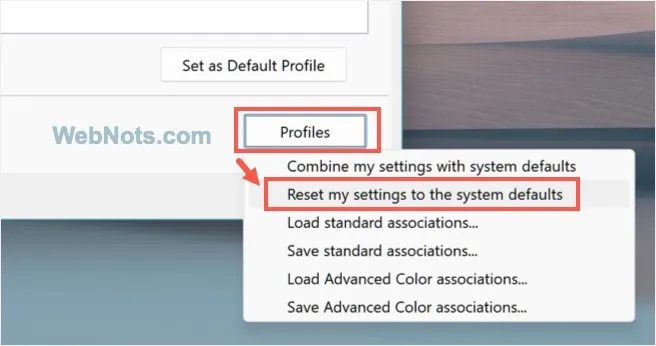
Alternatively, go to “Advanced” tab where you can manually select system defaults for each setting.
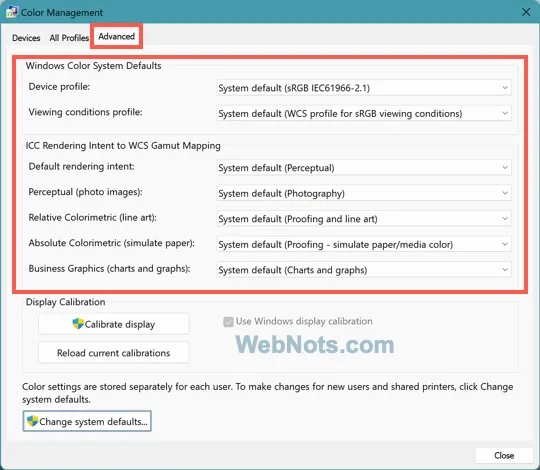
From here, you can do two more things. One is to click on “Calibrate display” button to start the device calibration process. Another is to click “Change system defaults…” button to edit system default profiles.
Final Words
Changing color profile can help to fix printing and display problems and have uniform appearance on multiple display devices. Though Windows will use default setup, you can install custom profiles and edit the device assignment for your need. Remember, color profiles will not affect certain stuffs like system mode (dark or light), accent and taskbar colors. You can configure these things in Settings app separately under “Personalization > Colors” section.
How to change and install color profiles on Windows 11
Sign in to your XDA account
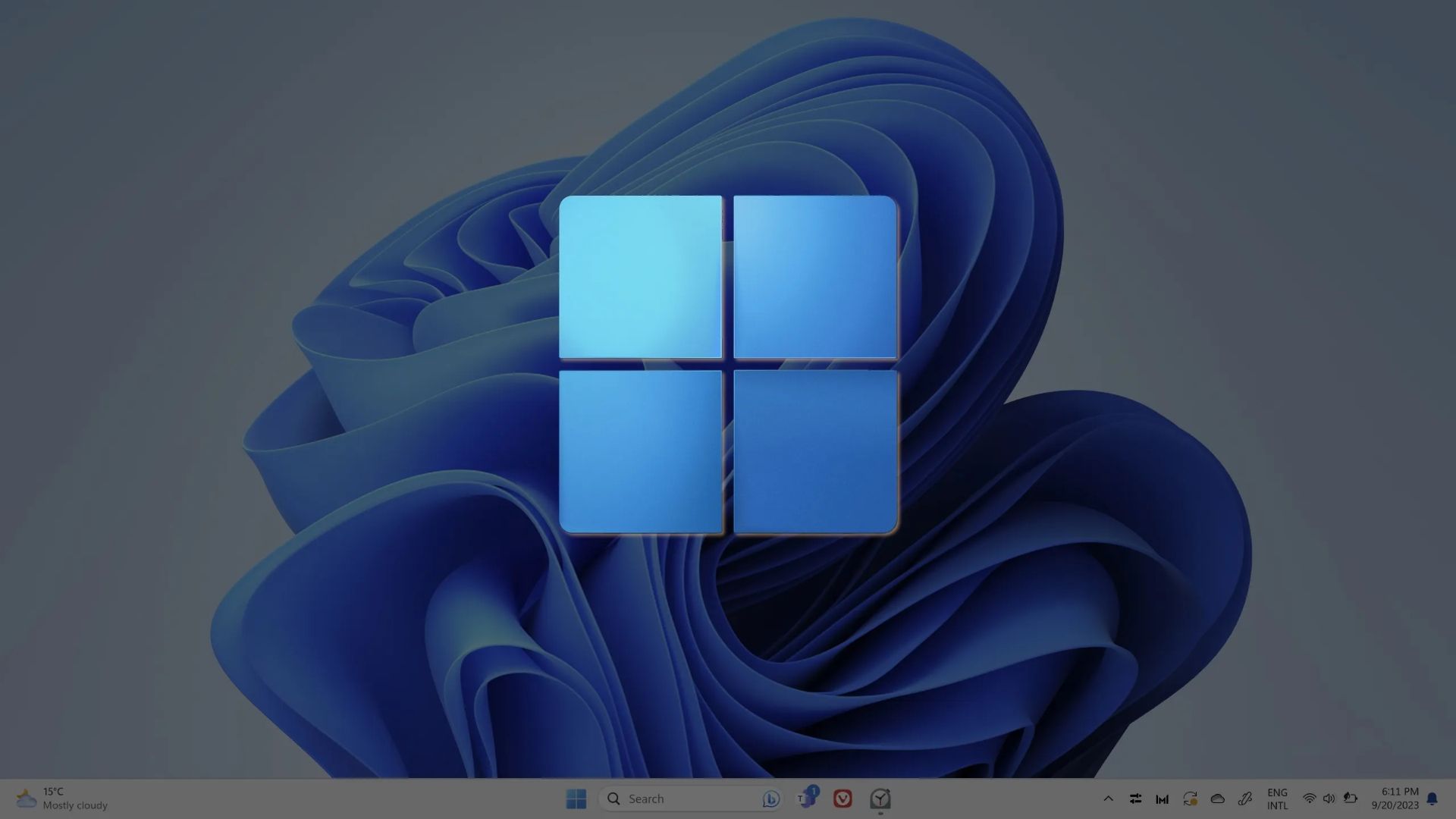
You may not immediately think of it, but every screen or monitor out there is very different. Each screen you come across has different brightness levels, contrast, and colors, even if the differences are small enough that you can generally adapt to anything.
Every screen should work fine with Windows 11 out of the box, but in many cases, installing dedicated color profiles can make your fancy monitor really shine. If you’re experiencing screen color issues and would like to find a way to fix it, follow this guide as we cover how to change and install color profiles on Windows 11.
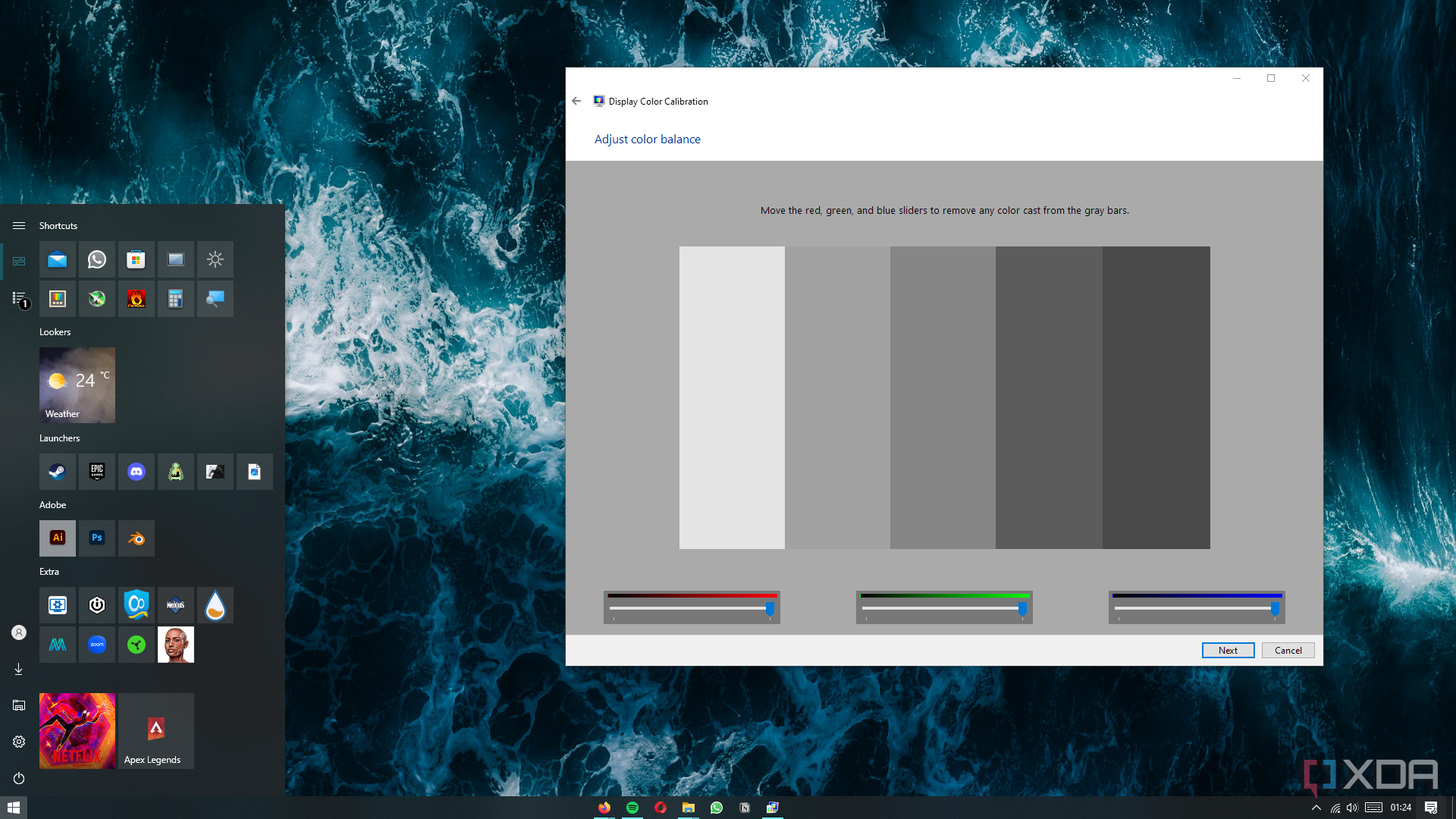
Related
How to color calibrate your monitor on Windows
Colors on a monitor don’t look the best right out of the box. Here’s how you can change that.
What are color profiles on Windows 11?
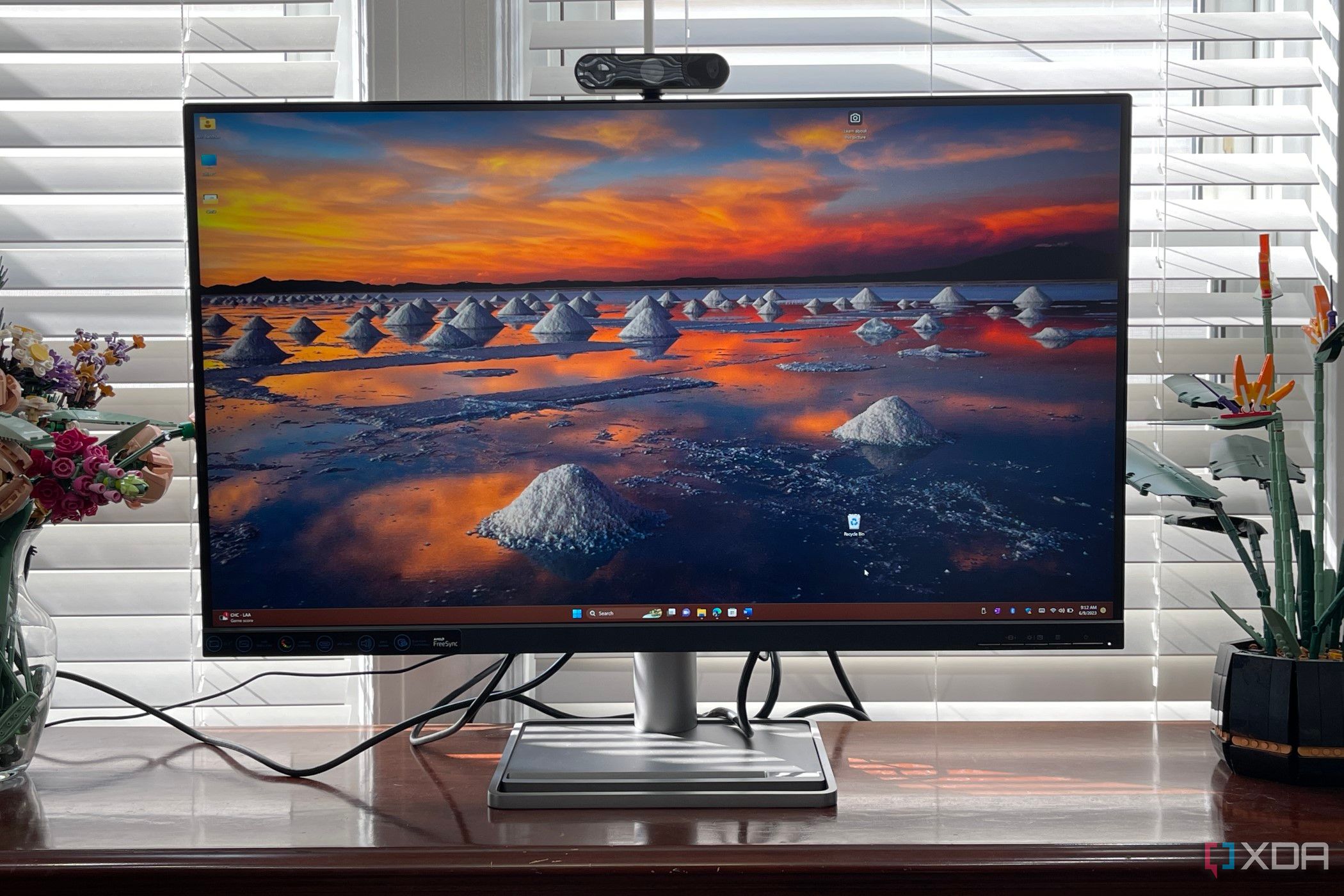
Color profiles are packets of information your operating system (in this case, Windows 11) uses to display and render color to a screen correctly. Since all displays are built differently, monitors use different formats to display color, which means the default Windows profiles may not always be ideal for the monitor you’re using, especially if you’re working in a color-sensitive field.
Most modern laptops are immune from this problem as their components are built to work with the screen, but you might run into issues with a desktop PC. Windows’ default color profile is sRGB, meaning standard red, green, and blue. While this is the most common baseline profile for a screen, it’s not the most sophisticated, and it’s worth looking into profiles available for your specific monitor.
Why should you change your color profile?
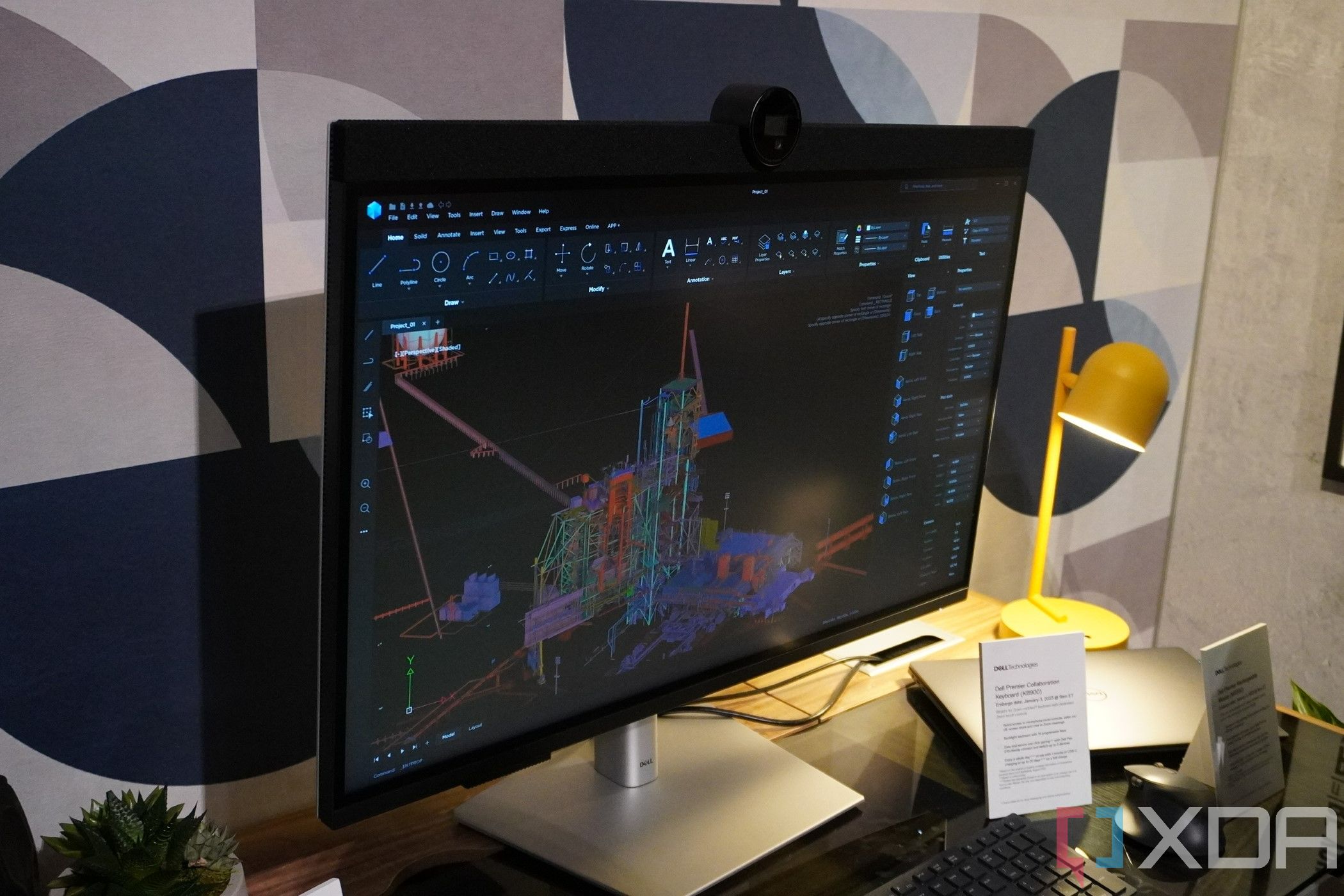
While sRGB is an excellent color profile for computers that are running everyday tasks, it offers the least amount of color display options when compared to alternate formats. Other popular options include DCI-P3, Adobe RGB, or ProPhoto RGB.
All of these options offer more advanced capabilities than sRGB, as they cover more of the spectrum of colors that can be perceived by the human eye. Adobe RGB offers the same three colors as sRGB but has much more color variation and depth. ProPhoto RGB is the best of the profiles because it has multiple colors, more complex color mixing, and a greater bit depth.
People will often need to use different color profile types if they work as photographers, video editors, or graphic designers because much of the media they work with will be in these formats. Others may change their color profile for gaming to have more vibrant and vivid colors in their games.
How do you find and download alternate color profiles?
Color profiles usually come pre-installed on your monitor and PC (in the case of laptops in particular). Sometimes, you will receive an installation disk with your monitor that has additional color profiles on it. If you don’t have an installation disk, most color profiles can just be downloaded from the manufacturer’s website. You will also need your monitor’s model number so that you can find the right display driver. You may also need the appropriate color management software from the manufacturer, as color profiles are usually not offered standalone by companies.
Alternatively, you can look at the websites of companies like Adobe to get their available color profiles. For example, Adobe offers a list of color profiles on this page. The International Color Consortium (ICC) also offers some color profiles for download here.
How to change and install color profiles using the Settings app
The latest version of Windows 11 includes color profile management in the Settings app, so using them is easier than ever. Here’s how it works:
- Open the Settings app.
- Go to the System section on the left-side pane and then choose Display.
-
Click the Color profile button.
- If you don’t have any color profiles installed or need to install one, click Add profile. Browse your files to find the color profile you want.
-
Your new color profile will automatically be set if you have no others available. Alternatively, you can click Set profile next to the profile you want to use.
That’s about all there is to it. Color profiles are applied instantly, so you can close out of the app when you’re done.
How to change and install color profiles on using Control Panel
If you have an older version of Windows or want to see more advanced settings, you can also use the Control Panel.
- Open the Control Panel by searching for it on the taskbar.
-
Use the search bar in the top-right corner to search for Color management and select that option.
-
In the Devices tab, tick the box that says Use my settings for this device.
- Select your color profile from the list underneath.
-
If you don’t see anything on the list, choose Add and select from the list of available profiles, then hit OK.
- Click Set as Default Profile.
- If you prefer to install a new color profile, click on the All Profiles tab.
-
Click Add and and browse your files select the color profile (ICC) file that you want to install.
- Go back to the Devices tab and select the ICC profile you just added.
- Now click the Set as Default Profile button.
- You can now exit the menu, and your color profile should be active.
If you’d like to reset your color profile, here are some simple steps for how to do it.
- Open the Control Panel and navigate to the Color Management page (as described above).
-
Click on Profiles, and then choose the Reset my settings to the system defaults option in the dropdown menu.
- Your color profiles should be reset, and you can exit the window.
Do you need to change your color profile on Windows 11?
Changing your color profile is not a very common problem that needs fixing. With computer monitors becoming more advanced overall, many now come with integrated software that adapts the monitor to your setup.
The need for color profile adjustments is often driven by work requirements. Others do it so that the image quality is crisper when playing games or watching movies. Some may just need to fix visual issues when using an older monitor.
So, whether your intent is for work or play, now you know how to change and install color profiles on Windows 11 to improve the image quality of your PC.
- To change the color profile on Windows 11 24H2, open Settings > System > Display > Color profile, click “Add profile,” and open the “ICM” or “ICC” file to change the profile.
- On Windows 11 23H2 and older versions, open Settings > System > Display > Advanced display, click the adapter properties setting, click on “Color Management” from the “Color Management” tab, choose the display, open the “ICM” or “ICC” file, and click “Close.”
On Windows 11, you can add and change a monitor’s color profile to ensure that colors appear as accurately as possible on the screen. In this guide, I will show the steps to complete this configuration, whether you have an older or newer version of Windows.
What is a color profile?
A color profile is a file with instructions that describe how the system should render the correct colors for a specific display. You’ll find two types of profiles, including the ICC and ICM.
While both profiles are virtually the same, “ICC” stands for International Color Consortium, the organization that created the standard format for this profile type, and “ICM” stands for Image Color Management, a term used by Microsoft for color profiles.
How to find and download color profiles?
The easiest way to download color profiles is to open your display manufacturer’s support website, search for your display model, and download the corresponding files on the support page.
Usually, display manufacturers provide these profiles as part of the support aside from the drivers. However, anyone can create and share a color profile. For instance, for this guide, while looking for the profile for my monitor, I found out that the Rtings website also offers color profiles in its reviews. You may also find color profiles from well-known video and photo editing companies.
It’s important to note that sometimes, computer manufacturers will preinstall the corresponding profile in the default installation of Windows 11. Also, when purchasing a monitor, the box typically includes a disc with the drivers and the different profiles, or at least you will receive instructions to download the files from the support website.
In this guide, I will outline the steps to add and switch color profiles on Windows 11.
- Change color profile on Windows 11 24H2
- Change color profile on Windows 11 23H2
To change the color profile of a display on version 24H2 and higher releases, use these steps:
-
Open Settings.
-
Click on System.
-
Click the Display page.
-
Click the Color profile setting to open the “Color management” page.
-
Select the display to change the setting (multi-monitor display).
-
Click the Add profile button from the “Add color profile” setting.
-
Select the ICM or ICC file with the color calibration information.
-
Click the Open button to set the new profile.
-
(Optional) Click the profile setting and click on “Set as system default.”
Once you complete the steps, the monitor should now render the most optimal colors on the screen.
If you have multiple profiles, you can switch them from Settings > System > Display > Color profile and clicking the “Set profile” button. You can also switch profiles from System > Display.
Remove color profile on version 24H2
To remove a profile from your computer, use these steps:
-
Open Settings.
-
Click on System.
-
Click the Display page.
-
Click the Color profile setting to open the “Color management” page.
-
Click on the profile you no longer want.
-
Click the Remove option.
After you complete the steps, the color profile will be removed from Windows, and the settings will reset to the generic configuration.
On Windows 11 23H2, you can switch profiles from System > Display from the “Color profile” setting.
Change color profile on Windows 11 23H2
To change the color profile on version 23H2 and older releases, use these steps:
-
Open Settings.
-
Click on System.
-
Click the Display page.
-
Click the Advanced display setting under the “Related settings” section.
-
Choose the monitor from the “Select a display to view or change its settings” option.
-
Click the “Display adapter properties for Display X” setting.
-
Click the Color Management tab.
-
Click the Color Management button.
-
Choose the display from the “Device” drop-down menu.
-
Check the “Use my settings for this device” option.
-
Click the Add button.
-
Click the Browse button.
-
Open the folder with the color profile file.
-
Select the ICM or ICC file.
-
Click the Add button.
-
Click the OK button.
-
(Optional) Click the “Set as Default Profile” button.
-
Click the Close button.
Once you complete the steps, the screen should now display colors more accurately.
Remove color profile on version 23H2
To remove a specific color profile from your computer, use these steps:
-
Open Settings.
-
Click on System.
-
Click the Display page.
-
Click the Advanced display setting under the “Related settings” section.
-
Choose the monitor from the “Select a display to view or change its settings” option.
-
Click the “Display adapter properties for Display X” setting.
-
Click the Color Management tab.
-
Click the Color Management button.
-
Choose the display from the “Device” drop-down menu.
-
Select the profile from the list.
-
Click the Remove button.
After you complete the steps, the profile file will be deleted, and the screen will continue to work, using the default settings to display colors.
Although the default color rendering should be fine for most users, it’s a critical component for those working with video and photo editing, graphic designers, and gamers.
It’s important to note that setting a color profile does not replace color calibration. If your work relies on color accuracy, you should be using both features.
Color profile vs color calibration
On the one hand, the color profile contains information about a display’s specific capabilities, which helps the operating system render color more accurately. On the other hand, color calibration uses software and sometimes hardware (colorimeter) to measure your monitor’s response to various colors, and then you can use this information to adjust the settings on the monitor.
You can even use calibration to capture the correct measurements to create a custom color profile.
The reason why you have to use both color methods is that all displays will show colors differently, even those from the same company and the same model. For instance, I have a multi-monitor setup. One of the monitors has a brightness level of 36, and the other one is set to 45 for a more even viewing experience.
Are you using a custom color profile on your computer? Let me know in the comments.
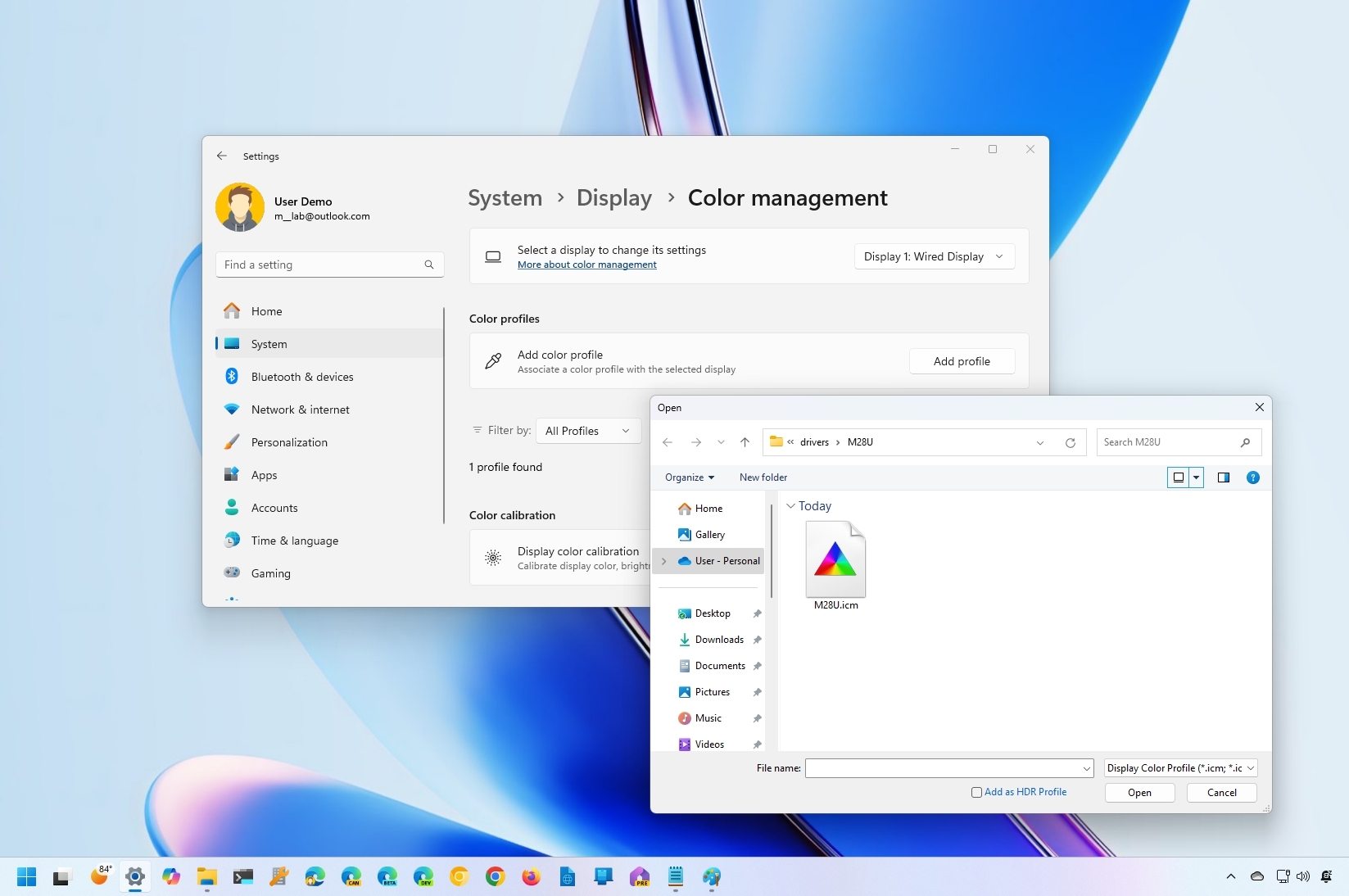
(Image credit: Mauro Huculak)
On Windows 11, similar to any operating system, accurate color rendering on the screen is critical, even more for those professionals working on video editing, photography, or gamers. As a result, in this guide, you will learn the steps to set the correct color profile for your monitor.
A color profile is a combination of settings that manufacturers create to describe how colors should be rendered on the display. Only after setting the correct profile will you be able to experience the intended color representation.
Although the operating system can detect and configure the appropriate profile if you notice that the colors don’t look accurate, the problem is probably not the monitor but rather the profile, which you can update from the Color Management application available on Windows 11.
In this how-to guide, I will walk you through the steps to use the correct color profile on Windows 11 version 24H2, 23H2, and older releases.
How to download color profiles for a display on Windows 11
Usually, the color profiles («ICM» or «ICC» files) available for your monitor come in the driver package or the installation disc. However, you can always download the files from the manufacturer’s website.
To find and download the correct color profile on Windows 11, use these steps:
- Open the monitor’s support page.
- Quick note: Some of the popular manufacturer’s sites include LG, BenQ, Samsung, Dell, and HP.
- Browse to the download section.
- Search for the latest monitor driver (not the graphics driver) using the model number of your device.
- Quick tip: You can find the monitor model number on the back of the device or, on Windows 11, open Settings > Displays > Advanced display.
- Click the Download button and save the file on your computer.
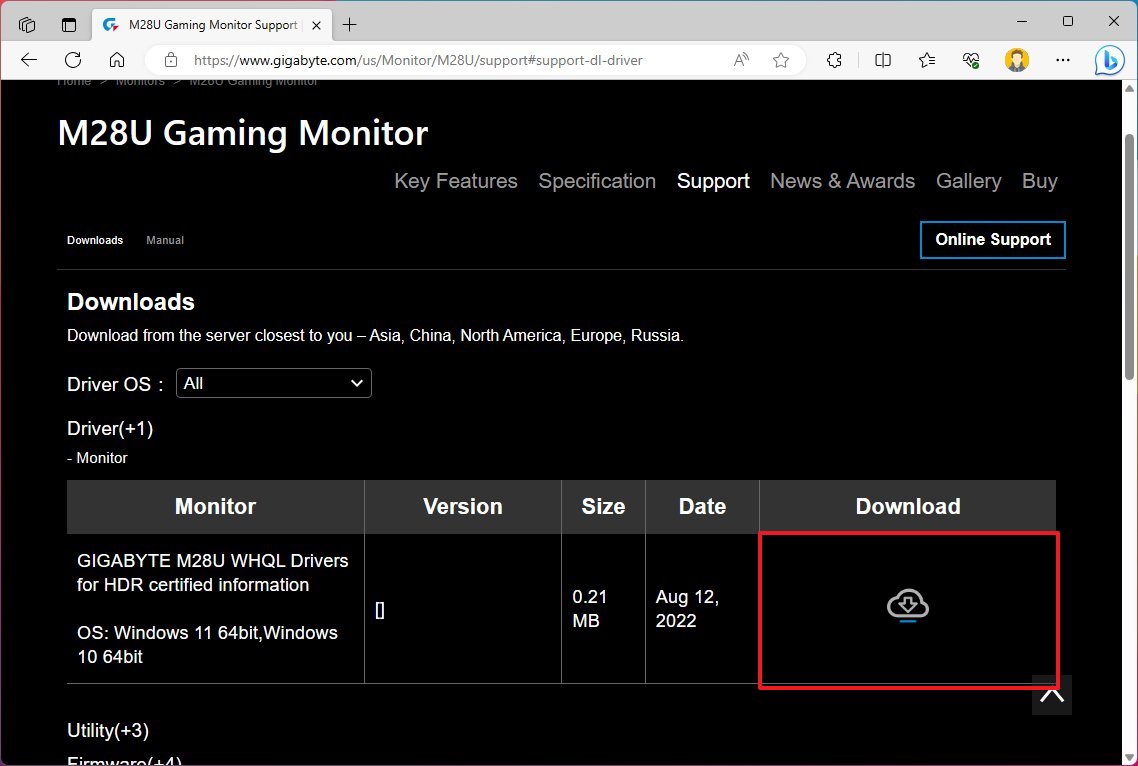
- Double-click to open the file.
- Click the Extract all button from the command bar (if this is a Zipped folder).
- Continue with the on-screen directions to extract its content.
- Open the folder with the extracted files.
- Confirm the «.icm» file, which is the color profile for your monitor.

Once you complete the steps, you can install the appropriate color profile for the computer’s monitor on Windows 11.
All the latest news, reviews, and guides for Windows and Xbox diehards.
How to install color profiles for a display on Windows 11
On Windows 11, you can install and manage color profiles from the «Color Management» tool or from the Settings app starting with version 24H2 and higher releases.
Steps for Windows 11 2023 Update
To install a color profile on Windows 11 (version 23H2 and older releases) from the legacy Color Management settings, use these steps:
- Open Settings.
- Click on Display.
- Under the «Related settings» section, click the Advanced display setting.
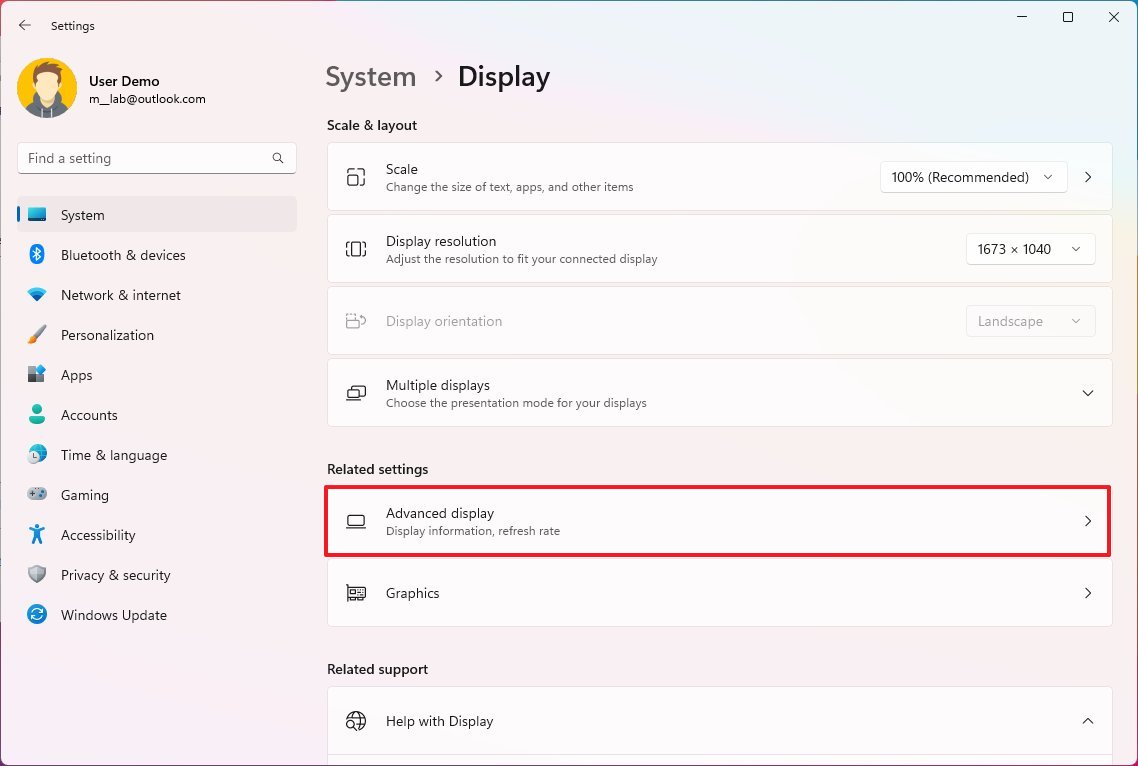
- Under the display settings, click the «Display adapter properties for» settings to graphics adapter properties.
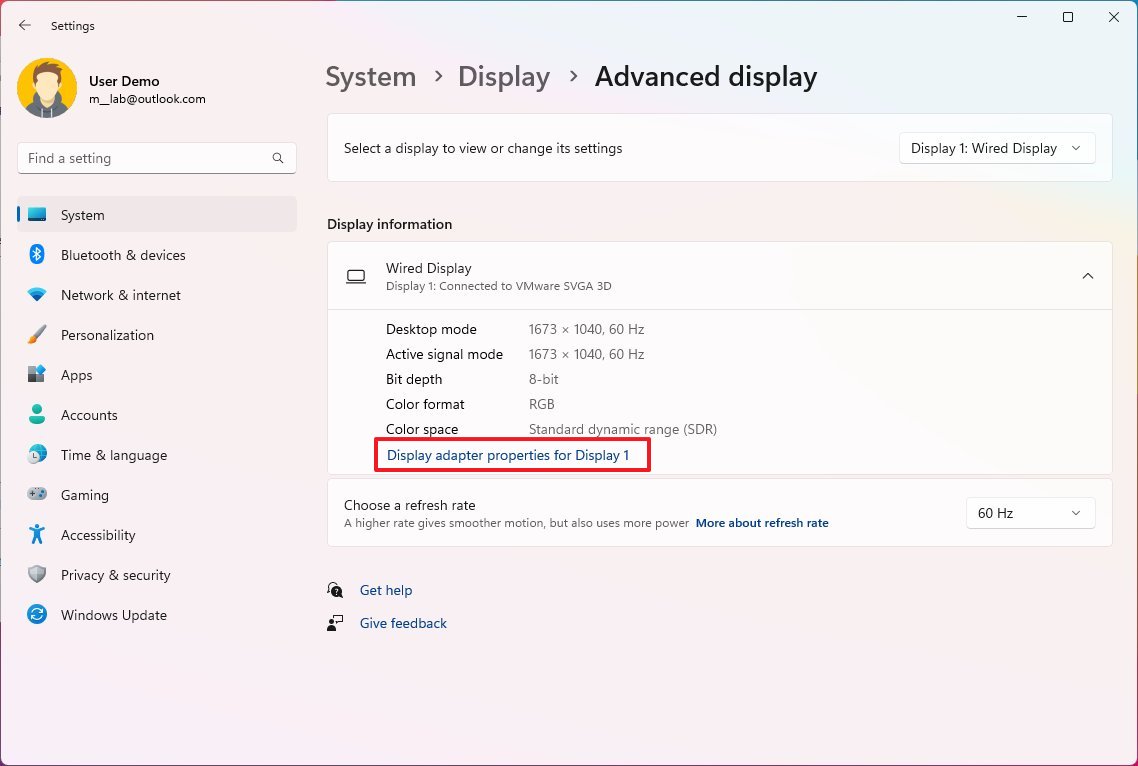
- Click the Color Management tab.
- Click the Color Management button.
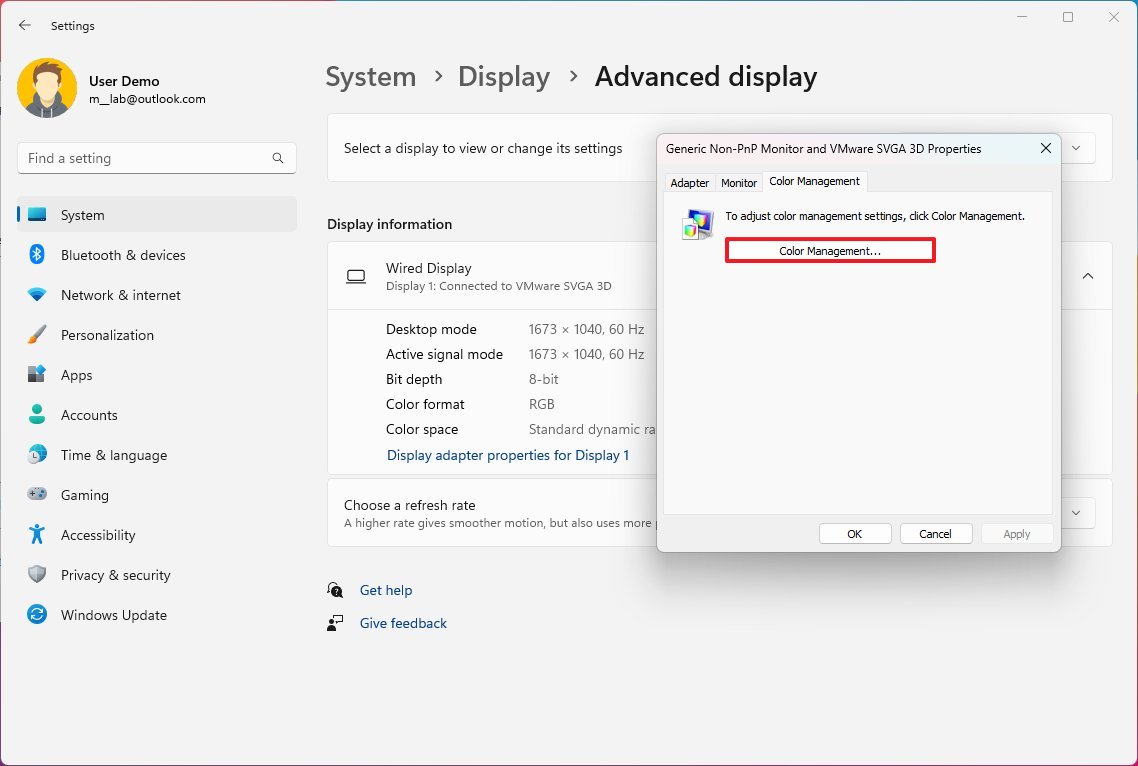
- Click the Devices tab.
- Choose the monitor to apply a new color profile using the «Device» setting.
- Quick tip: If you have a multi-monitor setup and you’re not sure which monitor you’re about to update, click the «Identify monitors» button.
- Check the «Use my settings for this device» option.
- Click the Add button.
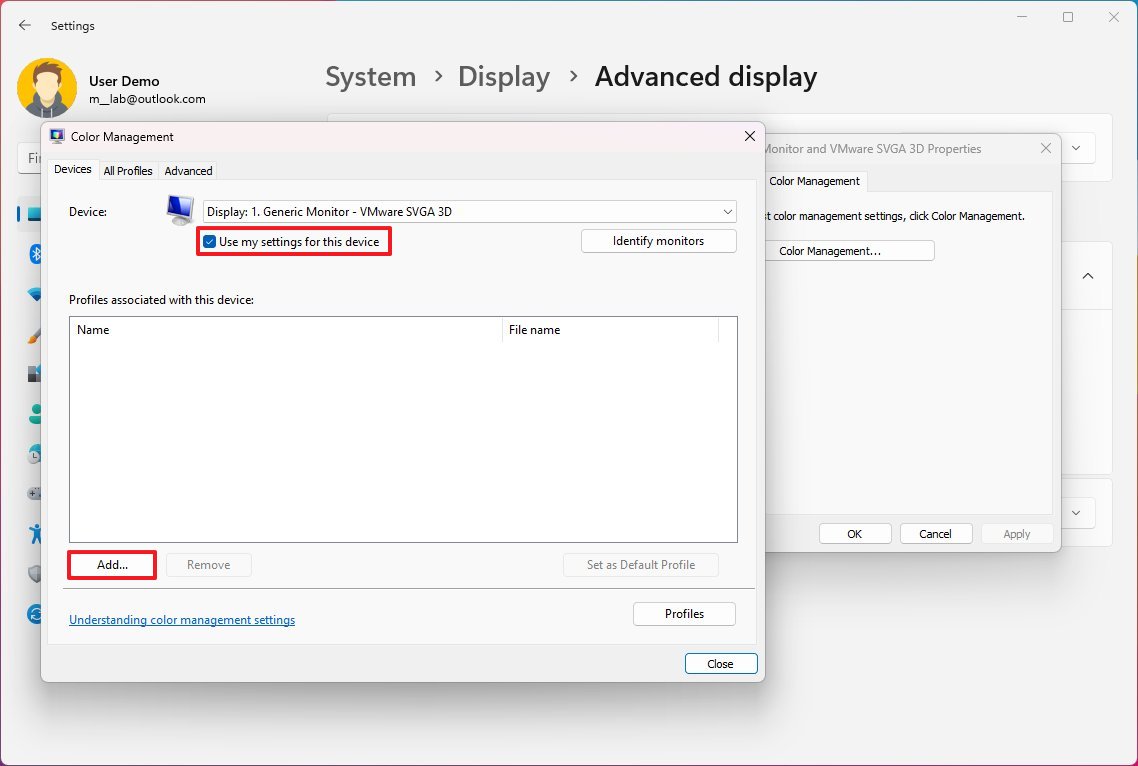
- In the «Associated Color Profile» page, click the Browse button.
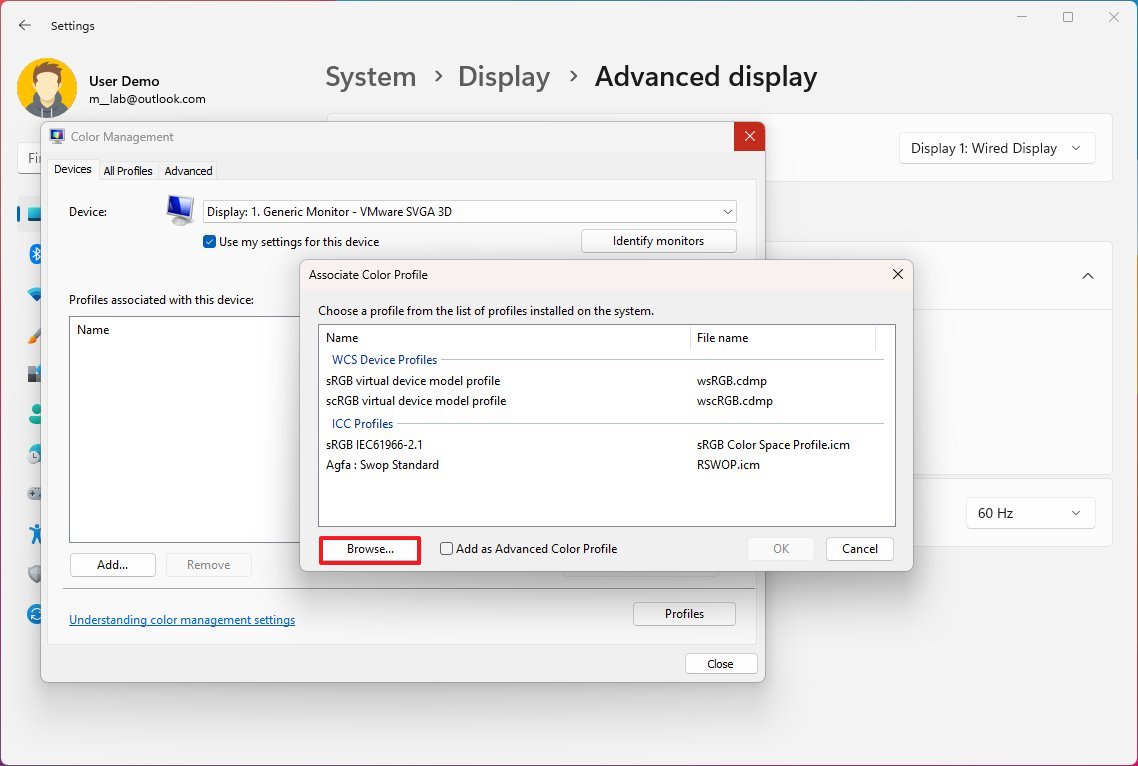
- Open the folder with the color profile file.
- Select the «.icm» file.
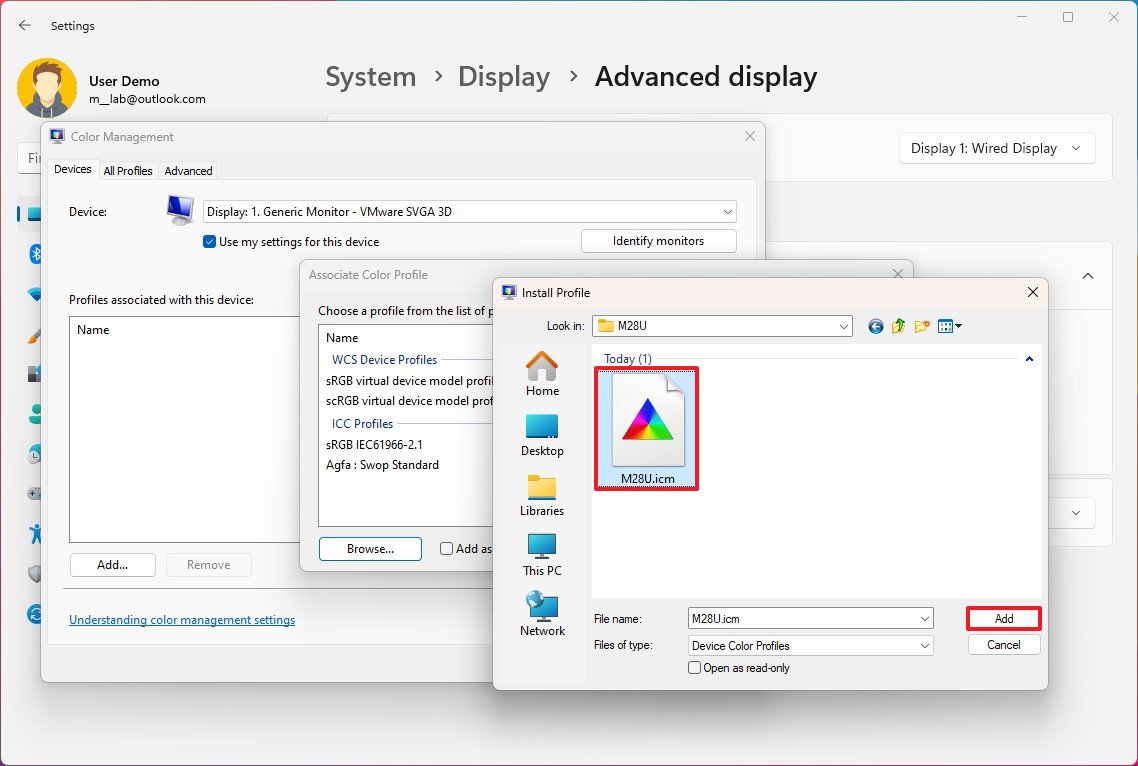
- Click the Add button.
- Click the Close button.
After you complete the steps, the profile will apply, and you should now be able to notice a change in how the display renders colors.
If you want to remove the specific profile, follow the same instructions, but in step 9, select the profile from the list and click the «Remove» button. However, the file containing the profile instructions will continue to be available on your computer. You can refer to the reset instructions to remove it.
Steps for Windows 11 2024 Update
To install a color profile on Windows 11 (version 24H2 and higher releases) from the modern Color Management settings, use these steps:
- Open Settings.
- Click on System.
- Click the Display page on the right side.
- Click the Color profile setting under the «Brightness & color» section.
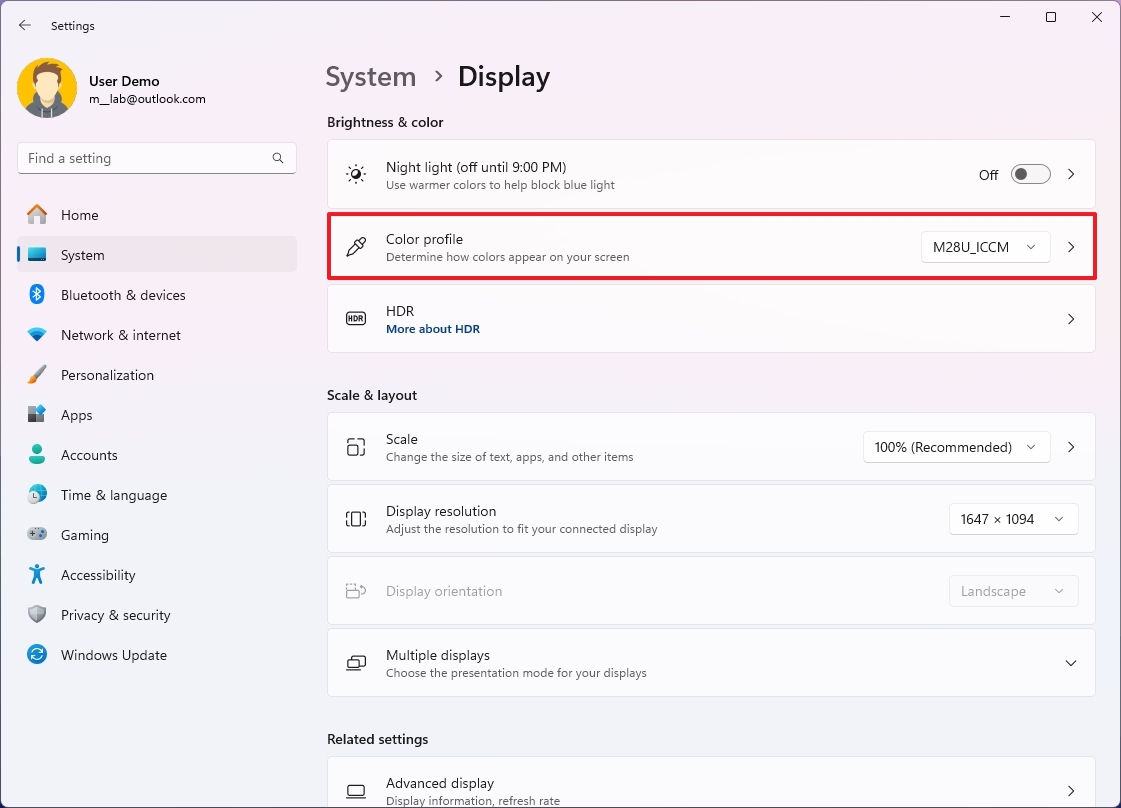
- Click the Add profile button in the «Add color profile» setting.
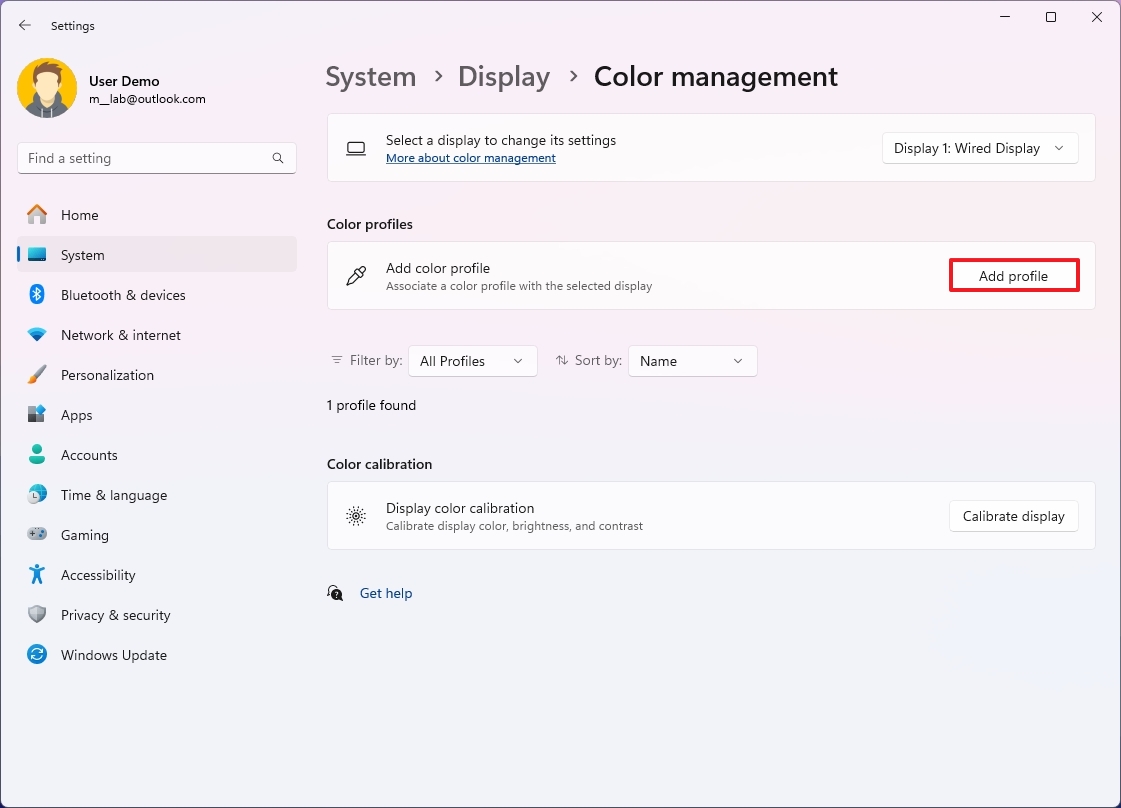
- Choose the profile file with the «icm» or «icc» extension.
- Click the Open button.
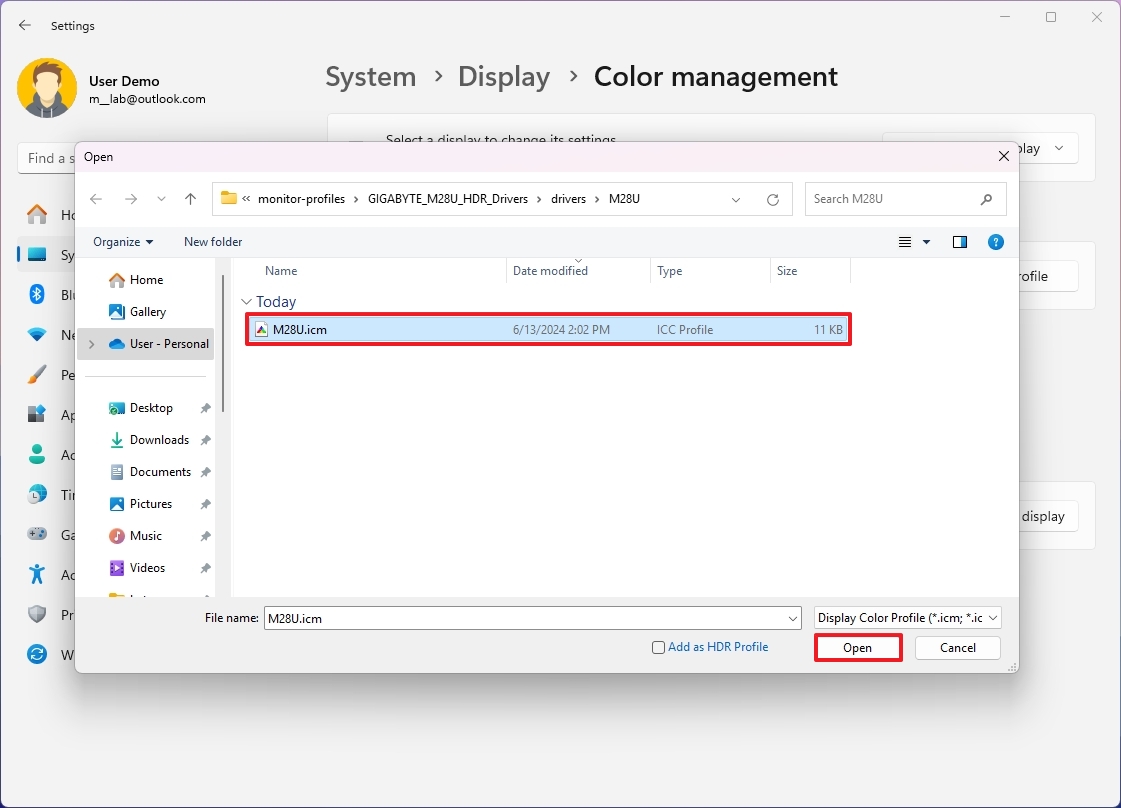
- (Optional) Click the profile setting to review the different details like color space, version, file name, and more.
- (Optional) Click the Set profile button if you have multiple profiles.
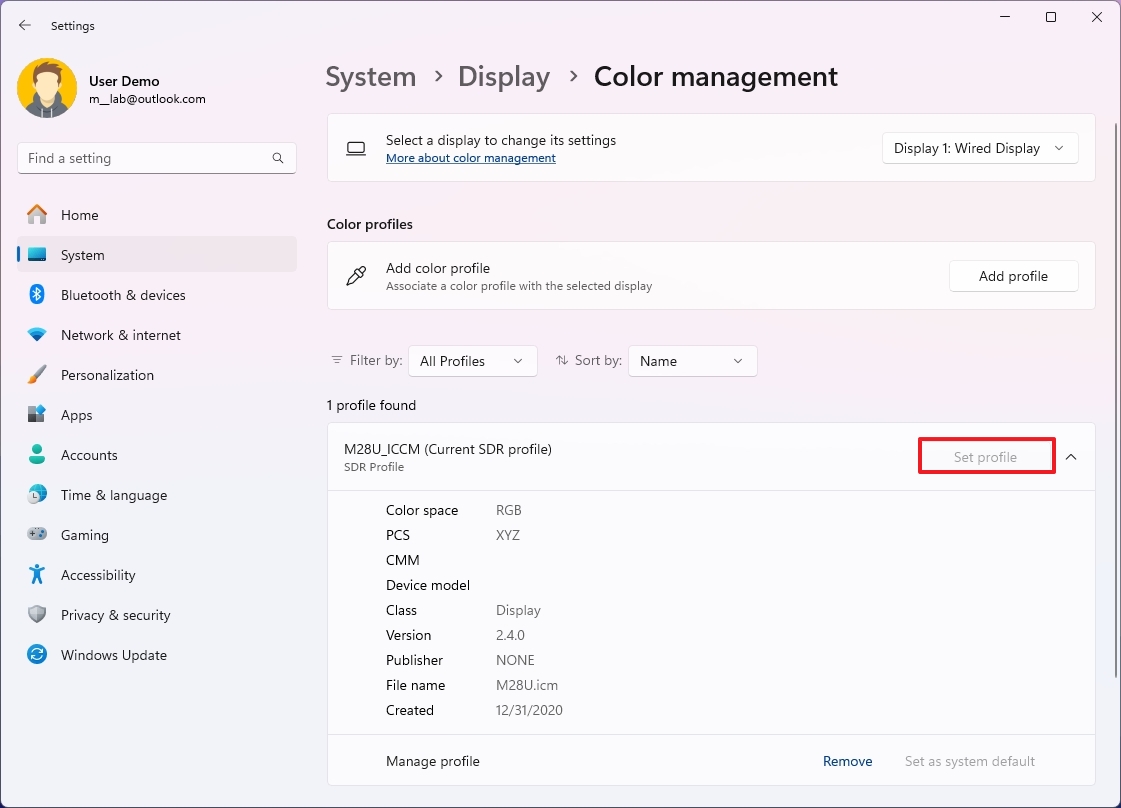
Once you complete the steps, the new profile will be applied to your computer.
If you want to remove the specific profile, follow the same instructions, but in step 9, click the «Remove» button. However, the file containing the profile instructions will continue to be available on your computer. You can refer to the reset instructions to remove it.
How to reset color profile settings on Windows 11
In the case that you need to roll back the previous settings, you can use the instructions below to reset to the default color profile configuration on Windows 11 version 24H2, 23H2, and older releases.
To reset the color profile to the default settings, use these steps:
- Open Start.
- Search for Color Management and click the top result to open the app.
- Click the Devices tab.
- Click the Profile button.
- Select the monitor to reset using the «Device» setting.
- Click the Profiles button and choose the «Reset my settings to the system defaults» option.
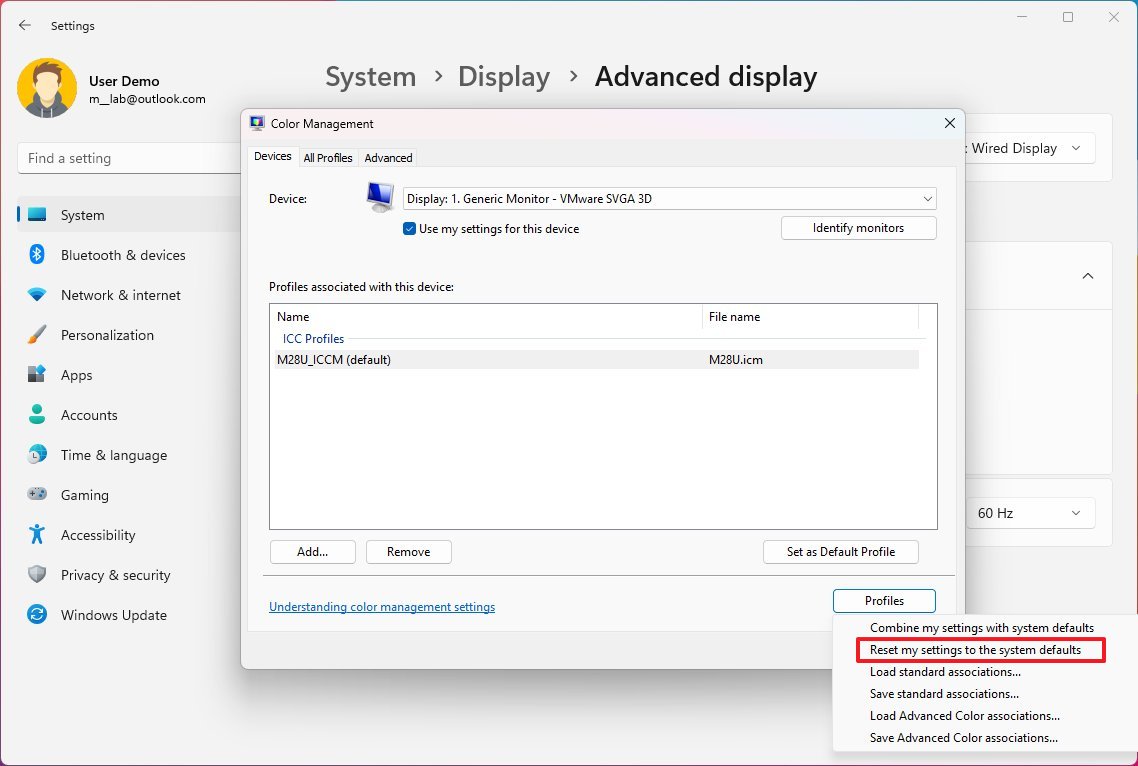
- (Optional) Click the All profiles tab.
- Select the profile you want to remove.
- Click the Remove button.
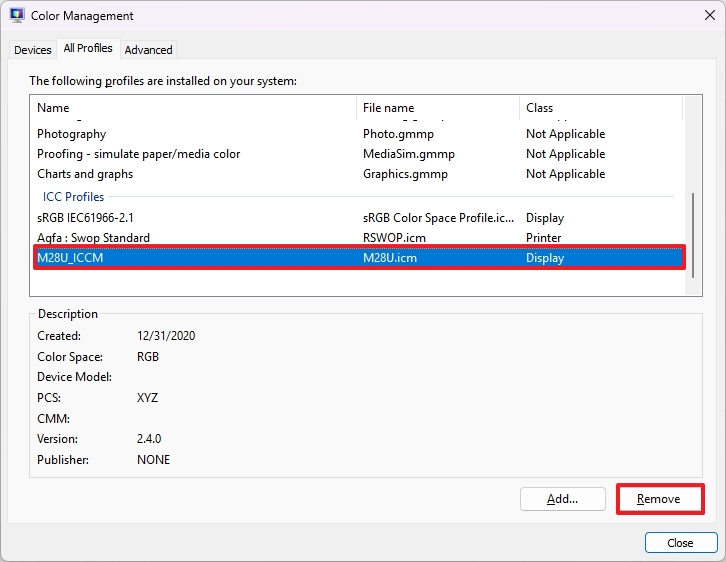
Once you complete the steps, the profile settings will roll back to the original configuration for that specific monitor.
It’s important to note that even though you can configure a custom profile for your monitor manually, typically, when you connect a display to the computer, the system sets up the recommended color profile. As a result, you should only consider using these instructions if the device is using the wrong profile or you have specific requirements to change the color profile on Windows 11.
More resources
For more helpful articles, coverage, and answers to common questions about Windows 10 and Windows 11, visit the following resources:
- Windows 11 on Windows Central — All you need to know
- Windows 10 on Windows Central — All you need to know
Mauro Huculak has been a Windows How-To Expert contributor for WindowsCentral.com for nearly a decade and has over 15 years of experience writing comprehensive guides. He also has an IT background and has achieved different professional certifications from Microsoft, Cisco, VMware, and CompTIA. He has been recognized as a Microsoft MVP for many years.






